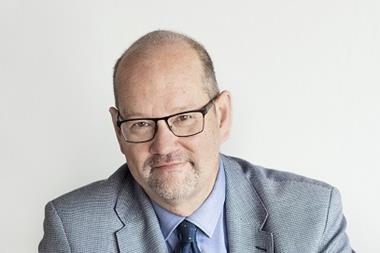“Companies addressing issues such as global demographic developments, rising consumption of raw materials and energy and the increasing environmental impact and effects of these are acquiring competitive advantage over those that were not” says Andreas Knoerzer, head of sustainable investments at Bank Sarasin.
Sarasin has been involved in sustainability research since 1989 and has been part of the United Nations Environment Programme (UNEP) since 1996.
“We managed our first mutual fund in 1994 and now manage £1.3bn (€1.9bn) in assets,” says Knoerzer.
He continues: “There are immense cost savings that could be made by avoidance of environmental damage and the benefits arising from the application of care in the use of diminishing resources. There are also opportunities through the opening up of new markets resulting from the development of ecologically sound technologies. Investment opportunities over the next five years from a carefully selected portfolio of companies likely to become beneficiaries of these factors are clearly appealing.”
Sarasin has performed case studies where it examined the financial performance of better rated companies in environmentally sensitive sectors such as forestry, mining etc. “We found that they outperformed the lower rated ones,” Knoerzer says.
Sarasin’s so-called ‘sustainability matrix’ is based on a measure of the sustainability of the company in comparison to other companies in the same sector versus the sustainability of the industry in terms of technology and products.
The company covers 40 sectors. “It is important to note that we don’t just look at sustainable industries,” says Knoerzer. “Some companies perform better in certain sectors than others and this unlocks the potential for portfolio investors.”
Sarasin’s analysts include biologists, geographers, physicists and engineers.
“So if we engage with companies and raise questions we are more readily accepted by companies because we have worked in the industry,” Knoerzer continues; “much more readily than a junior from university who wants to do good in the world.”
Sarasin’s sustainable investment research team has identified themes for the recently launched Sarasin OekoSar Equity fund, a global equity fund searching for companies likely to be beneficiaries of these themes:
❑Clean energy and efficiency;
❑Health;
❑Water;
❑Sustainable consumption;
❑Sustainable mobility;
❑ Services (eg, environment and education);
❑Innovative management systems.
Knoerzer provides an example of a stock that fits the Sarasin OekoSar ‘Clean energy and efficiency’ theme - SolarWorld AG - which is active at all levels of the value chain in photovoltaic renewable energy, from the silicon raw material to the finished solar power installation. Between January 2005 and the middle of February this year the share price rose some 542%.
Over the same period another company, Aguas de Barcelona supplying 15m people in Spain and 20m in South America, has seen its share price increase 46%. The company is also engaged in desalination of water.
Sarasin invests in companies that have little conflict with their stakeholders thus are not driven in the first instance by ethical issues. “We do offer negative screening but we look at positive screening,” Knoerzer explains. “For example, in the case of Brent Spar it doesn’t matter who is right – the damage has been done, and people didn’t use their petrol stations. So it is critical that companies look at how their actions will be perceived.”
He points out that the critical aspects are social. “Under that heading reputational risk is key – especially for companies relying on the value of their brand such as Nike, Adidas and Puma. With the World Cup coming up and so much publicity these companies will be scrutinised carefully by NGOs.”
He points out that the increasing profile of these issues has borne results: “As a result of the scrutiny these companies have substantially improved their supply chain. It is much tougher to become a supplier now than it used to be.”
One of the challenges for pharmaceutical companies is in providing therapies for poorer parts of the world, even if a country cannot afford it as is the case with HIV medication and Tamiflu.
“Investors are trying to address these issues,” says Knoerzer. “Roche responded by giving patents free to the 50 poorest countries and 50 at a discount to the 50 next poorest, etc.”
In measuring environmental impact Sarasin adopts the life cycle approach.












No comments yet